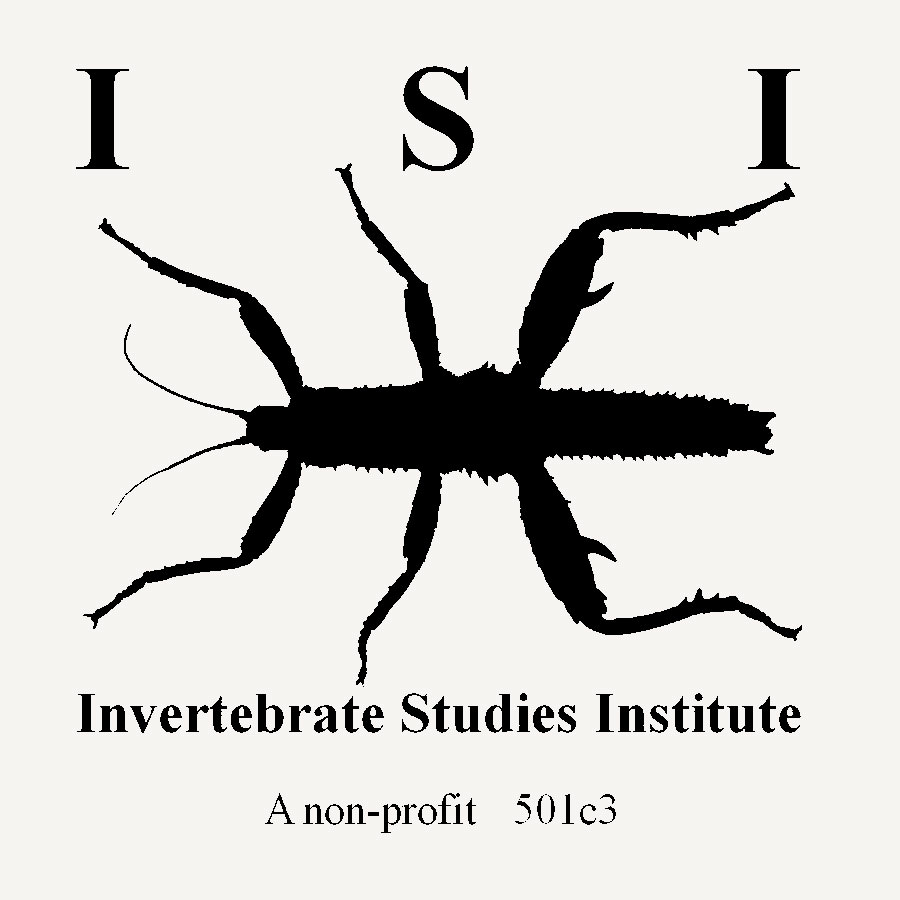Our Research.
Tell us about your research and why it is important.
3,000,000-40,000,000 species on earth!
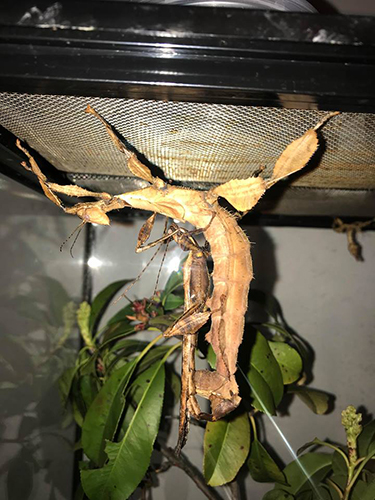
As rich as the biological diversity of invertebrates is, it’s chemical biodiversity is many fold larger. Yet, very little has been done to explore this chemical diversity and capitalize on it for any applications. ISI explores the chemical makeup of insects and their defense systems to discover new compounds which could be useful drug lead compounds such as new antibiotics, antivirals and anti-cancer therapies. ISI also has a heavy emphasis on sequencing the genomes of as many invertebrates as we can.
Within the genomes of these creatures lies the secrets to their chemical and biological diversity. With cutting edge genome sequencing technologies providing orders of magnitude lower costs and higher quality genomes than ever before, we will be able to produce complete genome sequences for hundreds, if not thousands of species and their internal microbes which will be critical data for decades of discovery. This endeavor will have great synergy with a number of other groups seeking to sequence the genomes of all life on earth.
CURRENT
ISI Research Projects
Bioprospecting and Drug Discovery
Discovering valuable compounds to benefit health derived from insects and other invertebrates
Genome Discovery
Sequencing the genomes of many Invertebrates to decide their amazing biology and illuminate valuable genes and biochemical entities for human health and other applications.
The Amazing Phasmids!
Studying stick insect chemical defense systems, biosynthetic machinery, genomes, husbandry and biology of some of the largest and most diverse insects on earth!
Current Projects
The Phasmids
Our first target group of animals for research
The goal of this project is: to sequence the genomes and transcriptomes of stick insects (phasmids, Order Phasmatodea) to elucidate the enzymes and biosynthetic pathways involved in their chemical defenses, to identify valuable bioproducts involved in these chemical defenses and the genomes in general and leverage our project to contribute educational programs on biochemistry, genomics and entomology.
Our target group of insects for this project, phasmids, are a relatively small (4,000 species) yet extremely diverse group with chemical defense systems which are easily analyzed yet extremely under-studied. In the future our organization plans to sequence the genomes of all phasmid species on earth. Thus, this work will elucidate potentially valuable biological resources derived from these animals while laying a substantial foundation for future studies of thousands of other insect genomes and their bioproducts. An initial case study will provide a broad catalyst to inspire more substantial efforts to explore insects as subjects for bioprospecting as sources of pharmaceutical lead compounds, enzymes and other valuable bioproducts. The project’s educational outreach component will further infuse an appreciation for careers in science, particularly toward inspiring the next generation of scientists to pursue elucidation of the biological wonders which insects possess as well as an appreciation for protecting our valuable natural world.

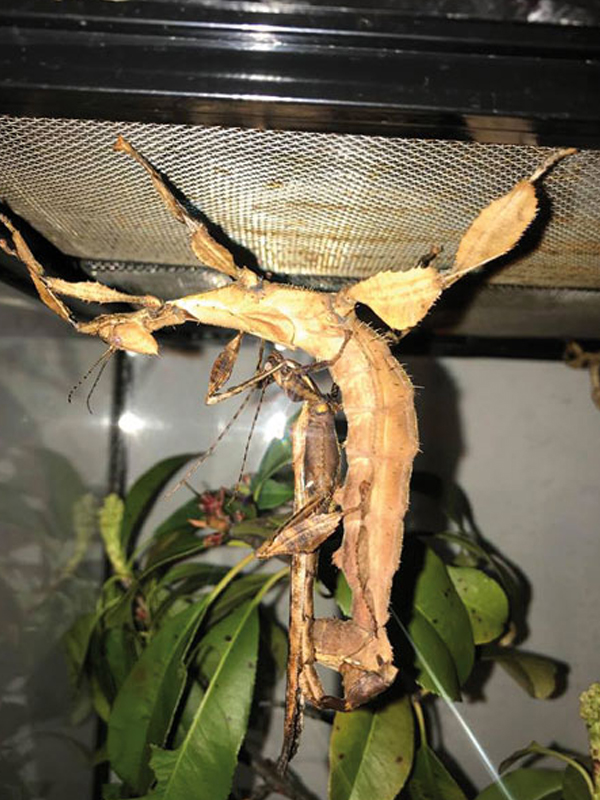



Value of phasmids as model systems for insect genomics, biosynthesis, bioprospecting and other biological studies: The biodiversity and chemical defenses of this insect order present routes for bioprospecting research opportunities. Phasmids are ” a small but highly diverse order, with over 4,000 described species (Bradler, et al., 2014). This number is small compared to many other insect orders such as beetles, butterflies and moths, ants, bees and wasps, etc. The moderate size of this group means they could be one of the first and most diverse entire insect orders whose genomes could be sequenced. Some characteristics making these insects excellent model systems for biological study include:
- Various forms of reproduction, including sexual and parthenogenesis.
- Some that possess wings and can fly, and some without wings entirely.
- A diverse array of defense mechanisms such as chemical excretion and sprays as well as physical defenses such as loud noises, elaborate defensive displays, and leg spines.
- Some with camouflage while others are brightly colored and aposematic.
- They exist on every continent, yet are most prevalent and diverse in tropical regions, with Southeast Asia containing the highest phasmid diversity.
- Large body size for obtaining large amounts of genomic DNA, RNA and other molecular samples. Phasmids are some of the largest insects on earth with the largest eggs of any insect.
- Long life/longevity for observing behaviors and biological processes over time.
- Very easy to culture and very charismatic for educational and conservation efforts.
- Diversity of age ranges, from a few months to 2-3+ years.
For this project our hypothesis is 2-fold: 1) Insects and their genomes contain a wealth of biological information from which we can glean understanding of biological processes and derive valuable biological resources for various applications and 2) stick insects (or “Phasmids”: Order Phasmatodea), are an ideal model system to study biosynthesis of various secondary chemical defense metabolites and the genomes, along with transcriptomes of their defense glands, contain most of the information we need to elucidate those biosynthetic pathways and the sequences of the biochemical machinery/enzymes responsible.
What We’ve Done.
For at least 15 years, our leadership has conducted extensive studies on insect chemistry, biochemistry, ecology, and husbandry (breeding and rearing) all of which form the basis of the foundation of ISI’s initial research program. We have published numerous peer reviewed research articles on the chemistry, biosynthesis and biology of stick insects (“Phasmids”; Order Phasmatodea; Class Insecta) which you can see at the links below. Our team has collectively bred, reared, cultured and studies hundreds of species of insects and other invertebrates and knows what it takes to build a facility to keep over 1,000 species on display and contributing to research which is at the core of ISI’s goals and mission.
Our Publications.
Aaron T. Dossey, Insects and Their Chemical Weaponry: New Potential for Drug Discovery, (2010) Invited review in Natural Product Reports, 27, (12), 1737-1757. Article is also featured on the cover of the December issue of NPR in which this article appears.
Aaron T. Dossey, Chemical Defenses of Insects: A Rich Resource for Chemical Biology in the Tropics, (2011) in Chemical Biology of the Tropics: An Interdisciplinary Approach, Jorge Vivanco and Tiffany Weir (Eds.), pp. 27-57, Springer, Heidelberg, Dordrecht, London, New York.
Aaron T. Dossey, Spencer S. Walse, Oskar V. Conle, and Arthur S. Edison, Parectadial: A Novel Monoterpenoid from the Defensive Spray of Parectatosoma mocquerysi, (2007), Journal of Natural Products, 70, (8), 1335-1338.; Made Hot Article for Journal of Natural Products; Featured in Chem Eng News, Raychelle Burks, Insect’s Venom Eyed For Cancer Defense: Walkingstick’s novel monoterpene shows activity against tumor cells, Aug. 9, 2007, p. 44.; Selected for the 2007 Jack L. Beal Award for Best Paper in the Journal of Natural Products, American Chemical Society and American Society of Pharmacognosy.
Aaron T. Dossey, Spencer Walse, James R. Rocca, Arthur S. Edison, Single Insect NMR: A New Tool to Probe Chemical Biodiversity, (2006) ACS Chemical Biology, 1, (8), 512-514.; Featured on the cover of the September 2006 issue. Featured in Chem Eng News, Ivan Amato, Individual Insects Make Signature Venoms: Walking stick study hints at chemical biodiversity in these insects, Sept. 25, 2006, p. 15.; A. T. Dossey featured in ACS Chemical Biology, Introducing our Authors, (2006), 1, (8), p. 473.
Oskar V. Conle, Frank H. Hennemann, and Aaron T. Dossey, Survey of the Color Forms of the Southern Twostriped Walkingstick (Phasmatodea: Areolatae: Pseudophasmatidae: Pseudophasmatinae: Anisomorphini), With Notes on Its Range, Habitats, and Behaviors, (2009), Annals of the Entomological Society of America, 102, (2), 210-232. Featured on the cover of the March, 2009 issue. Awarded “Editors’ Choice Award” for best paper of 2009.
Aaron T. Dossey, John M. Whitaker, Maria Cristina A. Dancel, Robert Vander Meer, Ulrich R. Bernier, Marco Gottardo and William R. Roush, Defensive Spiroketals from Asceles glaber(Phasmatodea): Absolute Configuration and Effects on Ants and Mosquitoes, (2012), Journal of Chemical Ecology, 38, (9), 1105-1115, (September, 2012).
Aaron T. Dossey, Marco Gottardo, John Whitaker, William R. Roush, and Arthur S. Edison, Alkyldimethylpyrazines in the Defensive Spray of Phyllium westwoodii: A First for Order Phasmatodea, (2009), Journal of Chemical Ecology, 35, (8), 861-870. This article also featured on the cover of the issue in which it appeared.
Bing Wang, Aaron T. Dossey, Spencer S. Walse, Arthur S. Edison, and Kenneth M. Merz, Jr., Relative Configuration of Natural Products Using NMR Chemical Shifts, (2009), Journal of Natural Products, 72, (4), 709-713.
Aaron T. Dossey, Spencer S. Walse, and Arthur S. Edison, Developmental and Geographical Variation in the Chemical Defense of the Walkingstick Insect Anisomorpha buprestoides, (2008), Journal of Chemical Ecology, 34, (5), 584-590.
Fengli Zhang, Aaron T. Dossey, Cherian Zachariah, Arthur S. Edison, and Rafael Brüschweiler, Strategy for Automated Analysis of Dynamic Metabolic Mixtures by NMR. Application to an Insect Venom, (2007), Analytical Chemistry, 79, (20), 7748-7752.
Michael P. McLeod, Aaron T. Dossey, and M. Khalique Ahmed, Application of attenuated total reflection infrared spectroscopy in the study of Peruphasma schultei defensive secretion, (2007) Spectroscopy, 21, (3), 169-176.
Orin McMonogle and Aaron T. Dossey, Skeleton Stick, (2007), March Issue, Invertebrates Magazine.
Where We’re Going
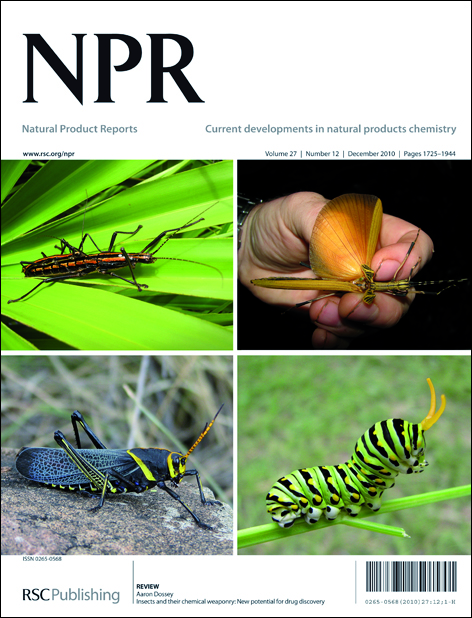
Meet Our Researchers
Our scientists have substantial backgrounds in many fields of research including biomedical research, drug discovery, natural products chemistry, entomology, genomics, genetic engineering, NMR, field biology, food science, as well as many years of entrepreneurial experience.

Dr. Aaron T. Dossey
Chair, President
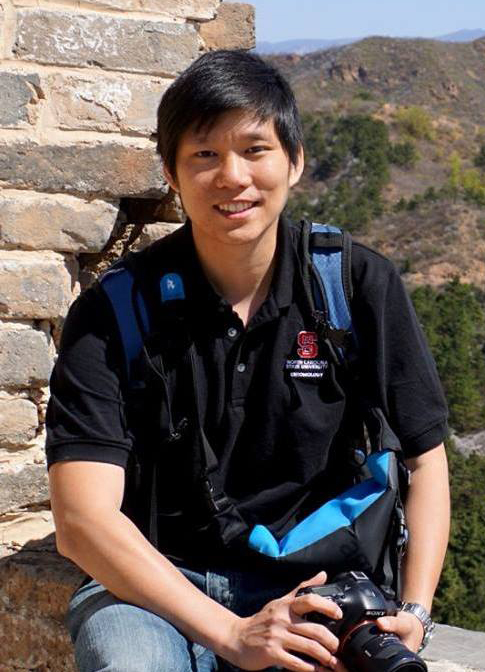
Dr. Fu-Chyun “Clay” Chu
Vice President
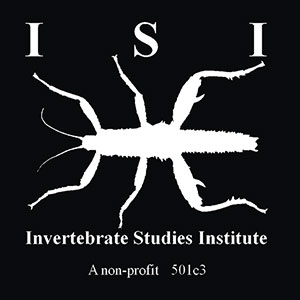
Invertebrate Studies Institute’s mission is to inspire appreciation for and conservation of the natural world through invertebrate focused research, education, outreach, entertainment activities.
Invertebrate Studies Institute, Inc. (ISI) is a non-profit 501c3 organization.
Our Offices
Invertebrate Studies Institute, Inc.
University Research Park
755 Research Parkway, Suite 552
Oklahoma City, OK 73130
Phone: 352-281-3643
Email: support@isibugs.org
Support ISI Today
ISI inspires appreciation for science, invertebrates and the natural world.
